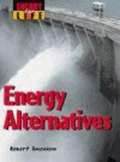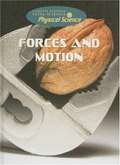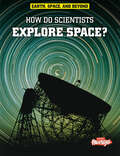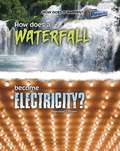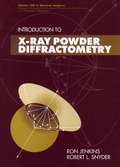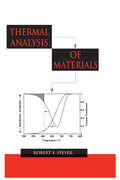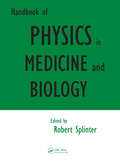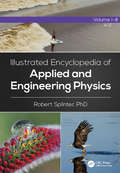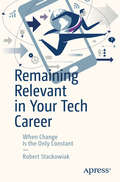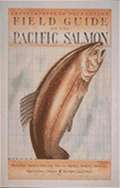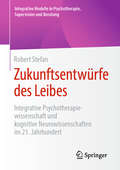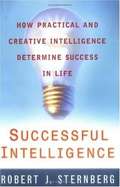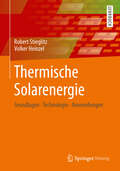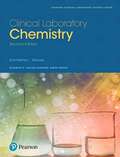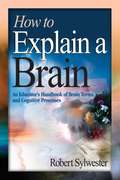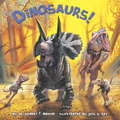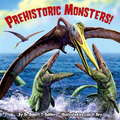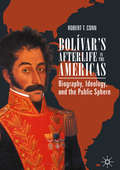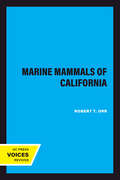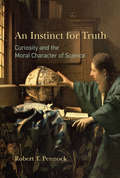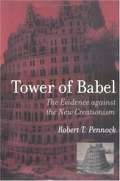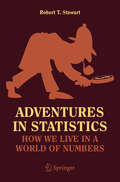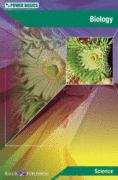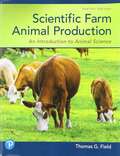- Table View
- List View
Energy
by Robert SneddenSmart Science is a new science series designed to grab hold of your intermediate learners. Topics match all the key curriculum areas for this age, and include dozens of simple, fun-to-do experiments that help students apply the concepts presented on each spread.
Energy Alternatives
by Robert SneddenEnergy Alternatives explores sources of energy that offer an alternative to nuclear and fossil fuels. It explains the benefits of renewable energy sources, and the part they will play in the future. The book examines how each energy source affects the environment.
Forces and Motion
by Robert SneddenGareth Stevens Vital Science books are designed to help prepare students for NCLB science testing by reinforcing key concepts across the science curriculum. The eight volumes in Physical Science use clear language and a variety of photographs and diagrams to increase students' understanding of forces and motion; light, heat, electricity, magnetism and sound; and the properties of objects they encounter in their daily lives. Two volumes discuss the history of science and the role of science in society. This book introduces Newton's Laws of Motion, friction, pressure, and more.
How Does A Waterfall Become Electricity? (How Does It Happen)
by Robert SneddenWhat is the world's tallest waterfall?What is the world's tallest waterfall? How do dams help generate water power? What happens when a waterwheel spins? This series explores the causes and effects that shape our world. From the underwater volcanoes that sprout into islands, to the rushing waterfalls that spark electric currents, this series demonstrates how both natural and man-made phenomena occur.
Introduction to X-Ray Powder Diffractometry
by Ron Jenkins Robert SnyderWhen bombarded with X-rays, solid materials produce distinct scattering patterns similar to fingerprints. X-ray powder diffraction is a technique used to fingerprint solid samples, which are then identified and cataloged for future use-much the way the FBI keeps fingerprints on file. The current database of some 70,000 material prints has been put to a broad range of uses, from the analysis of moon rocks to testing drugs for purity.Introduction to X-ray Powder Diffractometry fully updates the achievements in the field over the past fifteen years and provides a much-needed explanation of the state-of-the-art techniques involved in characterizing materials. It covers the latest instruments and methods, with an emphasis on the fundamentals of the diffractometer, its components, alignment, calibration, and automation.The first three chapters outline diffraction theory in clear language, accessible to both students and professionals in chemistry, physics, geology, and materials science. The book's middle chapters describe the instrumentation and procedures used in X-ray diffraction, including X-ray sources, X-ray detection, and production of monochromatic radiation. The chapter devoted to instrument design and calibration is followed by an examination of specimen preparation methods, data collection, and reduction. The final two chapters provide in-depth discussions of qualitative and quantitative analysis.While the material is presented in an orderly progression, beginning with basic concepts and moving on to more complex material, each chapter stands on its own and can be studied independently or used as a professional reference. More than 230 illustrations and tables demonstrate techniques and clarify complex material.Self-contained, timely, and user-friendly, Introduction to X-ray Powder Diffractometry is an enormously useful text and professional reference for analytical chemists, physicists, geologists and materials scientists, and upper-level undergraduate and graduate students in materials science and analytical chemistry.X-ray powder diffraction-a technique that has matured significantly in recent years-is used to identify solid samples and determine their composition by analyzing the so-called "fingerprints" they generate when X-rayed. This unique volume fulfills two major roles: it is the first textbook devoted solely to X-ray powder diffractometry, and the first up-to-date treatment of the subject in 20 years.This timely, authoritative volume features:* Clear, concise descriptions of both theory and practice-including fundamentals of diffraction theory and all aspects of the diffractometer* A treatment that reflects current trends toward automation, covering the newest instrumentation and automation techniques* Coverage of all the most common applications, with special emphasis on qualitative and quantitative analysis* An accessible presentation appropriate for both students and professionals* More than 230 tables and illustrationsIntroduction to X-ray Powder Diffractometry, a collaboration between two internationally known and respected experts in the field, provides invaluable guidance to anyone using X-ray powder diffractometers and diffractometry in materials science, ceramics, the pharmaceutical industry, and elsewhere.
Thermal Analysis of Materials (Materials Engineering)
by Robert SpeyerDiscussing the design and optimum use of thermal analysis instrumentation for materials' property measurement, this work details how the instruments work, what they measure, potential pitfalls and the fitting of experimental results to theoretical models. It presents a tutorial on writing computer programs for data manipulation, advanced thermoanal
Handbook of Physics in Medicine and Biology
by Robert SplinterIn considering ways that physics has helped advance biology and medicine, what typically comes to mind are the various tools used by researchers and clinicians. We think of the optics put to work in microscopes, endoscopes, and lasers; the advanced diagnostics permitted through magnetic, x-ray, and ultrasound imaging; and even the nanotools, that a
Illustrated Encyclopedia of Applied and Engineering Physics, Three-Volume Set
by Robert SplinterThis resource provides a single, concise reference containing terms and expressions used in the study, practice, and application of physical sciences. The reader will be able to identify quickly critical information about professional jargon, important people, and events. The encyclopedia gives self-contained definitions with essentials regarding the meaning of technical terms and their usage, as well as about important people within various fields of physics and engineering, with highlights of technical and practical aspects related to cross-functional integration. It will be indispensable for anyone working on applications in biomedicine, materials science, chemical engineering, electrical engineering, mechanical engineering, geology, astronomy, and energy. It also includes handy tables and chronological timelines organized by subject area and giving an overview on the historical development of ideas and discovery.
Remaining Relevant in Your Tech Career: Navigating Over A Lifetime Of Constant Change
by Robert StackowiakRemain relevant in the face of constant change during your career in technology. This book shows you how to proactively plan in anticipation of future changes. Many people find technology careers enticing because of the number of job opportunities, the high compensation, or simply because of fascination with technology itself. Once in those careers, however, there are many challenges to remaining relevant and at one’s peak in the face of constantly shifting competitive and technology landscapes. Incumbents face a constant stream of new skills to learn that are often already known by more recent graduates entering the market at lower compensation rates. There also are time-to-market challenges and the need to keep up with the introduction of automation.This book was written based on the author’s experience gained over 40 years working with and in technology-related fields and companies. It provides practical guidance on remaining relevant as changes are expected to occur in technology at ever faster rates in coming decades.What You'll LearnKnow what companies really wantRealize the importance of alignment with company cultureUnderstand the political landscape and how to use it to advantageDiscover why creating, maintaining, and operating in a diverse environment is beneficialMaster strategies for skills developmentFuture-proof your careerWho This Book Is ForTechnology professionals who want to remain relevant and happy while navigating their current career and university students who are pursuing a STEM career and actively planning their future
Zukunftsentwürfe des Leibes: Integrative Psychotherapiewissenschaft und kognitive Neurowissenschaften im 21. Jahrhundert (Integrative Modelle in Psychotherapie, Supervision und Beratung)
by Robert StefanEin wesentlicher Aspekt der Entwicklung von Psychotherapien ist die kontinuierliche Rezeption aktueller Forschungsergebnisse aus den angrenzenden Wissenschaften. Ausgehend vom Begriff des Leib-Subjekts in seinem ökologischen Kontext und Kontinuum stehen Erkenntnisse und zukunftsweisende Theoriebildungen aus den kognitiven und sozialen Neurowissenschaften zur Diskussion. Vorgestellt werden die 4E Kognitionsforschung und das Predictive Processing Modell. Eingängige wissenschaftsphilosophische Erläuterungen durchziehen die Studie und fördern ein fundiertes Verständnis der Verkörperung des Geistig-Psychischen im Bezugsrahmen der Integrativen Therapie.
Successful Intelligence: How Practical and Creative Intelligence Determines Success in Life
by Robert SternbergIn response to the current buzz surrounding such books as "Emotional Intelligence" and "The Bell Curve," Yale University professor Robert Sternberg challenges the age-long debate over nature vs. nurture. Proposing that nurture is far more important than nature in determining success in life, he challenges this critical debate about how to best evaluate and teach America's youth. Sternberg argues that traditional IQ tests and standardized tests measure only 'inert' intelligence, and are therefore poor predictors of how students will do in life. SATs and other standardized tests only evaluate our ability to memorize material and perpetuate the labeling of students based on often irrelevant criteria. "Successful Intelligence" offers specific ways to develop practical and creative intelligence, it demonstrates how accomplished people make successful intelligence work for them, it shows how members of various ethnic groups who typically do not do as well on tests of academic intelligence can compete successfully on creative and practical intelligence and it tells readers that the willingness to take risks and overcome obstacles is a key attribute for achieving intelligence. Sternberg provides us with a new definition of intelligence that predicts how students will fare in problem-solving in both their personal and professional lives. With the keys on how to achieve life's more important goals, Successful Intelligence will change the way we regard aptitude and intelligence.
Thermische Solarenergie
by Robert Stieglitz Volker HeinzelVon der physikalischen Basis bis zu Umsetzungen im häuslichen und kraftwerkstechnischen Bereich reichen die Aspekte der Solarthermie. Dieses Buch bietet eine fundierte Analyse der Thematik von Grundlagen der solaren Einstrahlung bis zu neuen Anwendungen. Diskutiert werden passive Aspekte, Energie- und Impulstransport in Systemen, aktive Nutzung von Niedertemperatursystemen sowie kraftwerkstechnische Umsetzungen. Bisher genutzte Konzepte, Spezifika und die Ankopplung an Kraftwerkszyklen werden ebenso beschrieben wie potenzielle Speicherverfahren.
Clinical Laboratory Chemistry
by Robert SunheimerClinical Laboratory Chemistry is a part of Pearson’s Clinical Laboratory Science series of textbooks, which is designed to balance theory and application in an engaging and useful way. Highly readable, the book concentrates on clinically significant analyses students are likely to encounter in the lab. The combination of detailed technical information and real-life case studies helps learners envision themselves as members of the health care team, providing the laboratory services specific to chemistry that assist in patient care. The book’s fundamental approach and special features allow students to analyze and synthesize information, and better understand the ever-evolving nature of clinical chemistry. The Second Edition has been streamlined and updated to include four new chapters covering safety, pediatrics, geriatrics, and nutrition; real-life mini cases; new figures and photographs; updated sources and citations; and a complete teaching and learning package.
How to Explain a Brain: An Educator's Handbook of Brain Terms and Cognitive Processes (1-off Ser.)
by Robert SylwesterNoted author Robert Sylwester offers educators and general readers his own definitions for terms used in the cognitive neurosciences. This unique look into the marvelous brain uses language and descriptions that are accessible to readers, even those with just a limited understanding of biology. Discover how our brain is organized and develops, and how educators can use this emerging understanding of cognition to enhance student learning and the school environment. This ready-reference guide to essential concepts and terms in cognitive neurosciences includes: -Nearly three hundred encyclopedic entries and cross references created to help educators understand key concepts about our brain's organization, development, and learning capabilities -Eleven newly created anatomic models and illustrations that focus on key brain systems and functions -References and recommended print and Internet resources How to Explain a Brain celebrates the brain in all its wonder and is sure to become a reference book of choice for teachers, instructional leaders, and teacher educators.
Dinosaurs! (Pictureback(R))
by Robert T. BakkerDinosaurs! follows the evolution of these spectacular creatures from their earliest beginnings as little fellows who had to evade attacks from giant croc relatives to today's living dinosaurs.
Prehistoric Monsters! (Pictureback(R))
by Robert T. BakkerA super-simple introduction to prehistoric animals, from the first weird and wonderful life forms on Earth to the earliest Ice Age humans-and much, much more.
Bolívar’s Afterlife in the Americas: Biography, Ideology, and the Public Sphere
by Robert T. ConnSimón Bolívar is the preeminent symbol of Latin America and the subject of seemingly endless posthumous attention. Interpreted and reinterpreted in biographies, histories, political writings, speeches, and works of art and fiction, he has been a vehicle for public discourse for the past two centuries. Robert T. Conn follows the afterlives of Bolívar across the Americas, tracing his presence in a range of competing but interlocking national stories. How have historians, writers, statesmen, filmmakers, and institutions reworked his life and writings to make cultural and political claims? How has his legacy been interpreted in the countries whose territories he liberated, as well as in those where his importance is symbolic, such as the United States? In answering these questions, Conn illuminates the history of nation building and hemispheric globalism in the Americas.
Marine Mammals of California (California Natural History Guides #29)
by Robert T. OrrThis title is part of UC Press's Voices Revived program, which commemorates University of California Press’s mission to seek out and cultivate the brightest minds and give them voice, reach, and impact. Drawing on a backlist dating to 1893, Voices Revived makes high-quality, peer-reviewed scholarship accessible once again using print-on-demand technology. This title was originally published in 1972.This title is part of UC Press's Voices Revived program, which commemorates University of California Press’s mission to seek out and cultivate the brightest minds and give them voice, reach, and impact. Drawing on a backlist dating to 1893, Voices Revived</DIV
An Instinct for Truth: Curiosity and the Moral Character of Science (The\mit Press Ser.)
by Robert T. PennockAn exploration of the scientific mindset—such character virtues as curiosity, veracity, attentiveness, and humility to evidence—and its importance for science, democracy, and human flourishing.Exemplary scientists have a characteristic way of viewing the world and their work: their mindset and methods all aim at discovering truths about nature. In An Instinct for Truth, Robert Pennock explores this scientific mindset and argues that what Charles Darwin called “an instinct for truth, knowledge, and discovery” has a tacit moral structure—that it is important not only for scientific excellence and integrity but also for democracy and human flourishing. In an era of “post-truth,” the scientific drive to discover empirical truths has a special value.Taking a virtue-theoretic perspective, Pennock explores curiosity, veracity, skepticism, humility to evidence, and other scientific virtues and vices. He explains that curiosity is the most distinctive element of the scientific character, by which other norms are shaped; discusses the passionate nature of scientific attentiveness; and calls for science education not only to teach scientific findings and methods but also to nurture the scientific mindset and its core values.Drawing on historical sources as well as a sociological study of more than a thousand scientists, Pennock's philosophical account is grounded in values that scientists themselves recognize they should aspire to. Pennock argues that epistemic and ethical values are normatively interconnected, and that for science and society to flourish, we need not just a philosophy of science, but a philosophy of the scientist.
Tower of Babel: The Evidence Against the New Creationism
by Robert T. PennockFinalist in the ForeWord Magazine Book of the Year Awards. Creationism is no longer the simple notion it once was taken to be. Its new advocates have become more sophisticated in how they present their views, speaking of "intelligent design" rather than "creation science" and aiming their arguments against the naturalistic philosophical method that underlies science, proposing to replace it with a "theistic science." The creationism controversy is not just about the status of Darwinian evolution--it is a clash of religious and philosophical worldviews, for a common underlying fear among Creationists is that evolution undermines both the basis of morality as they understand it and the possibility of purpose in life. In Tower of Babel, philosopher Robert T. Pennock compares the views of the new creationists with those of the old and reveals the insubstantiality of their arguments. One of Pennock's major innovations is to turn from biological evolution to the less charged subject of linguistic evolution, which has strong theoretical parallels with biological evolution, both in content and in the sort of evidence scientists use to draw conclusions about origins. Of course, an evolutionary view of language does conflict with the Bible, which says that God created the variety of languages at one time as punishment for the Tower of Babel. Several chapters deal with the work of Phillip Johnson, a highly influential leader of the new Creationists. Against his and other views, Pennock explains how science uses naturalism and discusses the relationship between factual and moral issues in the creationism-evolution controversy. The book also includes a discussion of Darwin's own shift from creationist to evolutionist and an extended argument for keeping private religious beliefs separate from public scientific knowledge.
Adventures in Statistics: How We Live in a World of Numbers (Copernicus Books)
by Robert T. StewartThis book is about how statistics play a role in life, whether in business, psychology, biology, economics, or just about anything short of basket weaving. You cannot make a trip to the doctor, watch a football game, or even go to the grocery store without some statistic staring you down. Your age, weight, and cholesterol make you a high risk for diabetes … the chance that your team will win the game is 12.5 percent … 4 out of 5 dentists like this toothpaste. What does it all mean? Adventures in Statistics: How We Live in a World of Numbers tells you what all those numbers mean. But the book does not spit out a bunch of mathematical formulas; the book tells stories. Stories that explain statistics through popular culture, sports, and history. You’re confused about that false positive warning in that drug commercial, the 2007 comedy Juno explains how medical tests – including pregnancy tests – fail and why. Not clear about what your coworkers are talking about when they say, ‘black swans.’ the 1997 blockbuster Titanic makes sense of the concept. Adventures in Statistics: How We Live in a World of Numbers shows how professionals in medicine, business, politics, sports, and many other fields use numbers. So, just about everyone would gain from reading this book, perhaps even basket weavers.
Power Basics: Biology
by Robert TaggartThis student text focuses on one concept at a time, illustrates lessons with concrete models and examples, and provides sample practice to achieve proficiency and mastery.
Scientific Farm Animal Production: An Introduction To Animal Science
by Robert Taylor Thomas FieldScientific Farm Animal Production: An Introduction to Animal Scienceis the single best integrated resource combining a strong disciplinary focus with best practices in production for the major livestock and poultry industries. A detailed study of eight primary livestock industries is examined along with market forces affecting demand across the supply chain as well as related societal issues and challenges. The 12th edition has updated industry data and insights, improved graphics and images, and simplified material adding greater meaning for students without a livestock production background.

